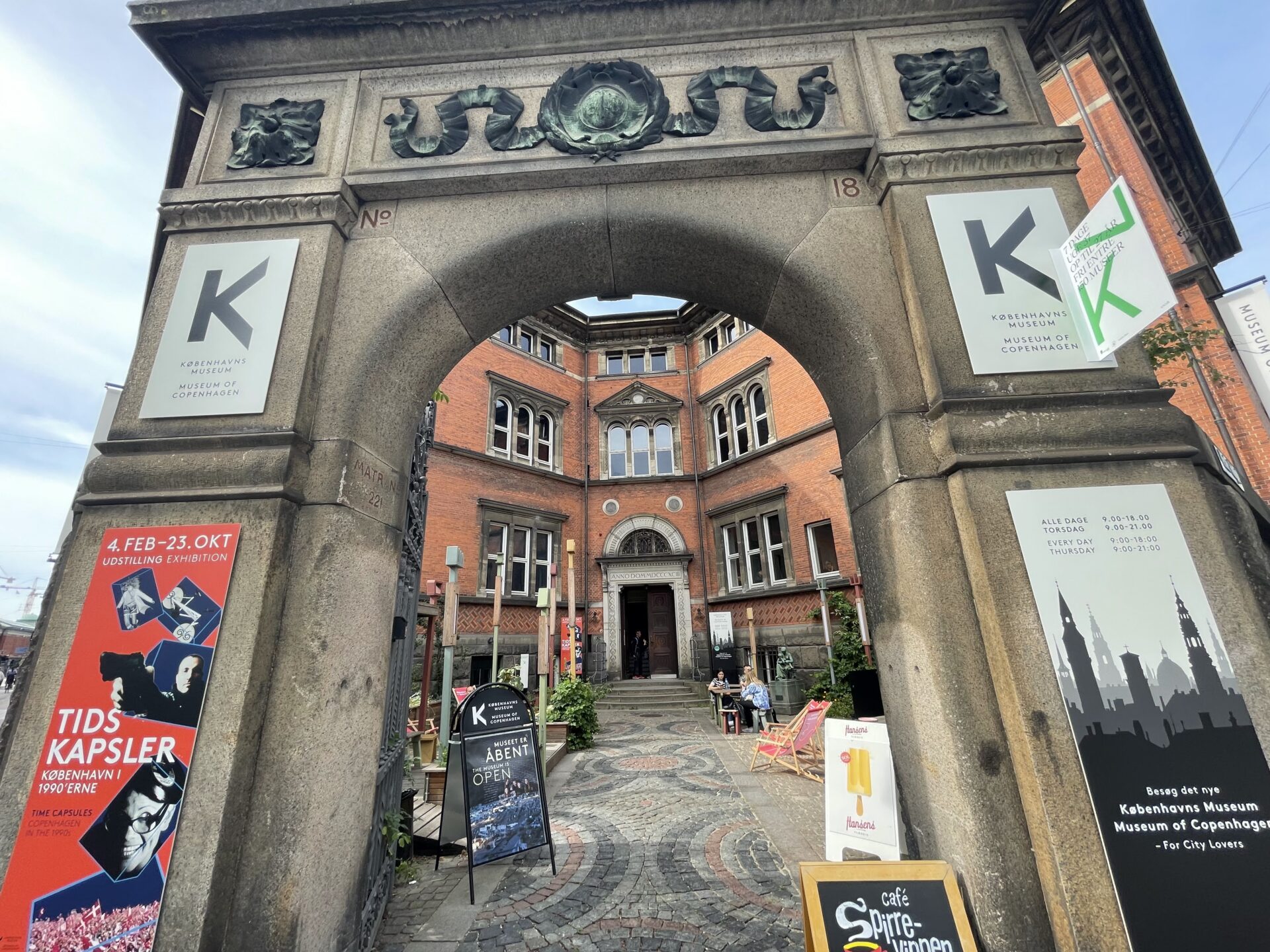This article has partner links that I may receive compensation from at no cost to you. Thank you for supporting my site by using them!
Other than actually living somewhere, there’s no better way to quickly get to know a city than going to its city museum. The Museum of Copenhagen provides an excellent overview of the Danish city’s history & culture, from the prehistoric era to today.

Museum of Copenhagen Visitor Information
The Museum of Copenhagen (official website) is located in central Copenhagen, not far from the Museum of Denmark and the Ny Carlsberg Glyptotek. It’s right near hop-on, hop-off bus routes as well as other public transportation lines. An admission fee is charged, except on Wednesdays. Children can always visit for free. Entry to the Museum of Copenhagen is included with the Copenhagen Card. The ticket also provides access to Thorvaldsen’s Museum and the Nikolaj Copenhagen Contemporary Art Center within a 48-hour period.
Highlights of the Museum of Copenhagen
The Museum of Copenhagen is located in a former government building known as Overformynderiet, having moved there in 2020. Nearby, there is a separate archaeological workshop that is open on weekends.

The new location of the Copenhagen Museum is a beautiful old building. There is an exhibit about its history on the museum’s first floor. It was first opened as the Public Trustee’s Office in 1893. In the 1930s, the Child Welfare Department moved in followed by healthcare services. Finally, the building housed the council housing association starting in the 1960s.
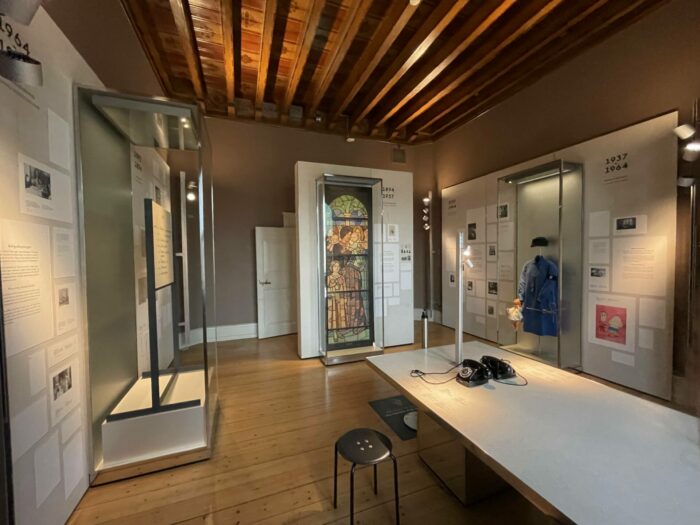
Passing the temporary exhibition space, as well as the cafe & gift shop, the visit to the permanent exhibition heads upstairs past a beautiful stained glass window.
Book your hotel in Travel Guides now!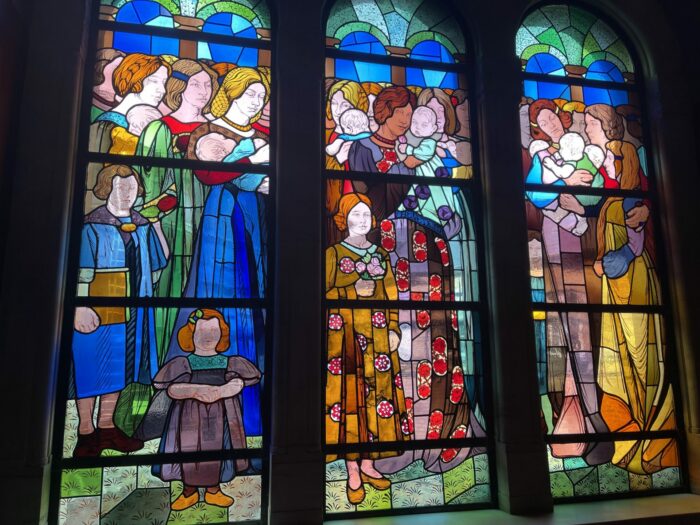
Like most history museums, the Museum of Copenhagen is split into sections by time period. The first one is called “The Making of A Capital,” covering the time period from 12,000 BCE to 1660. All of the museum’s exhibits are presented in both Danish & English.
There are local archaeological finds including flits, coins, construction elements, and even skeletons.
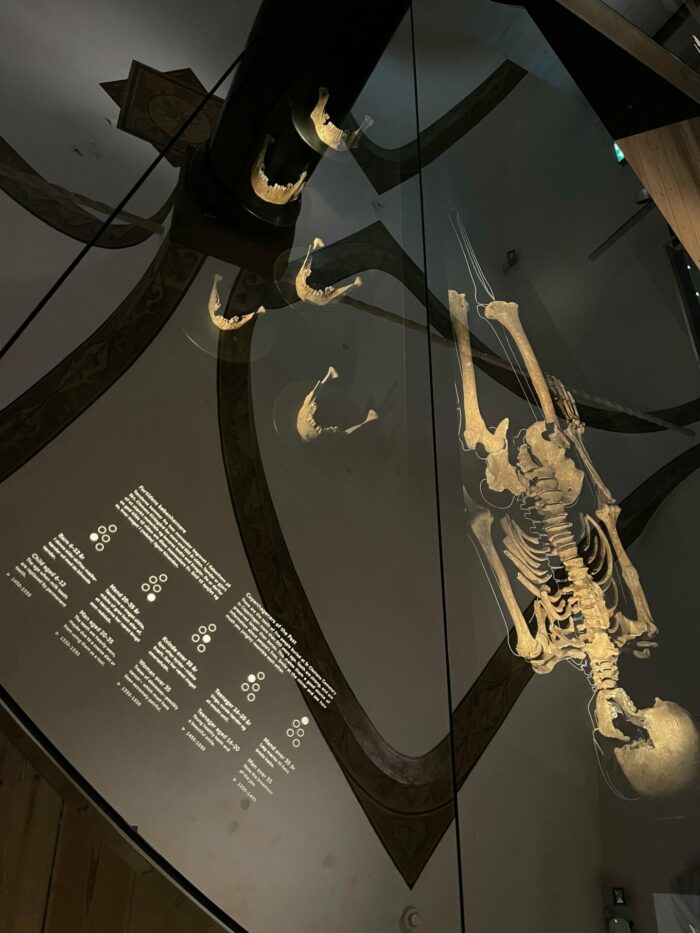
Another display features pieces of a shipwreck from the 1400s.
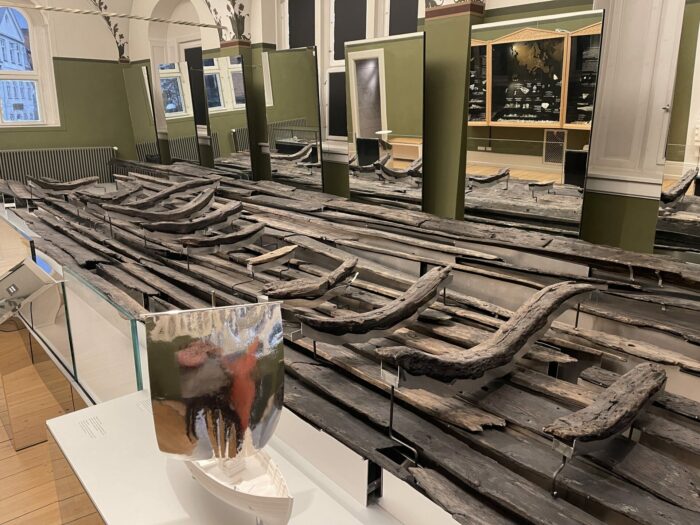
Copenhagen was originally a smaller medieval town, but it was then expanded by King Christian IV to add Christianshaven, Skt. Annae Town, and fortifications. The city’s layout still shows this today.
In 1659, the Battle of Copenhagen (also known as the Assault on Copenhagen) took place. The main attack by the Swedes happened right outside where the museum is located. The assault was repelled, ending the Second Northern War and establishing the current borders of Denmark, Sweden, and Norway.
The next section of the Museum of Copenhagen is titled “A Fortified City.” It covers the post-war era from 1660 to 1850.
During this time, a city wall with gates surrounded Copenhagen. The museum has the key to these gates, which opened 24/7 starting in 1821. Although the gates were demolished between 1856 & 1858, the gate names still remain today. For example, “Nørreport” means “North gate.”
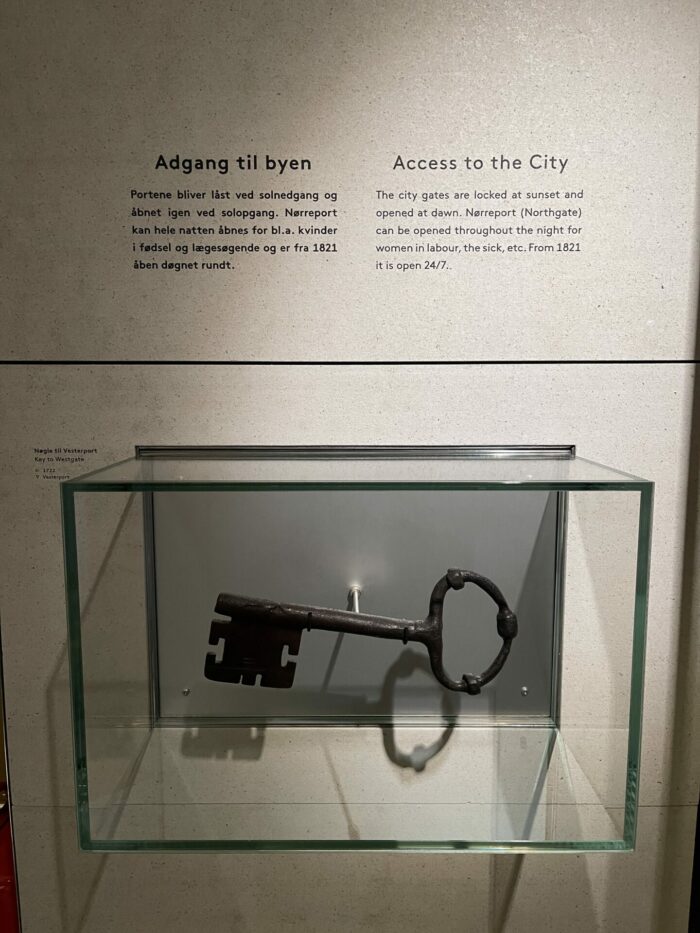
Another section covers poverty & punishment, including the city’s citadel.
This time period also featured advancements in Danish culture, such as literature, theater, and opera. There are items from writers such as Kierkegaard, including a lock of his hair.
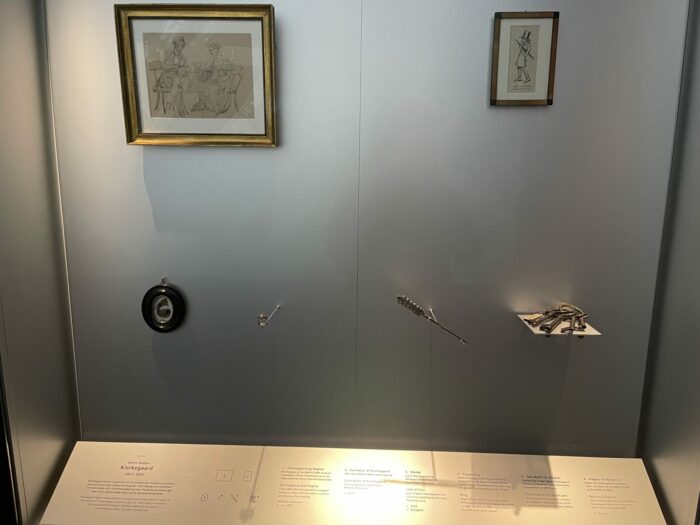
Other historical items include a drinking horn as well as other drinking vessels, plus shoes and wigs.
It wasn’t all fun and entertainment, however. During this era, a series of disasters befell the city. Massive fires destroyed sections of Copenhagen in 1728 & 1795. The Battle of Copenhagen took place in 1807, resulting in the bombardment of the city by the British. As a result, few buildings from before this period remain today.
The museum’s collection includes art from the time period of the Battle of Copenhagen.
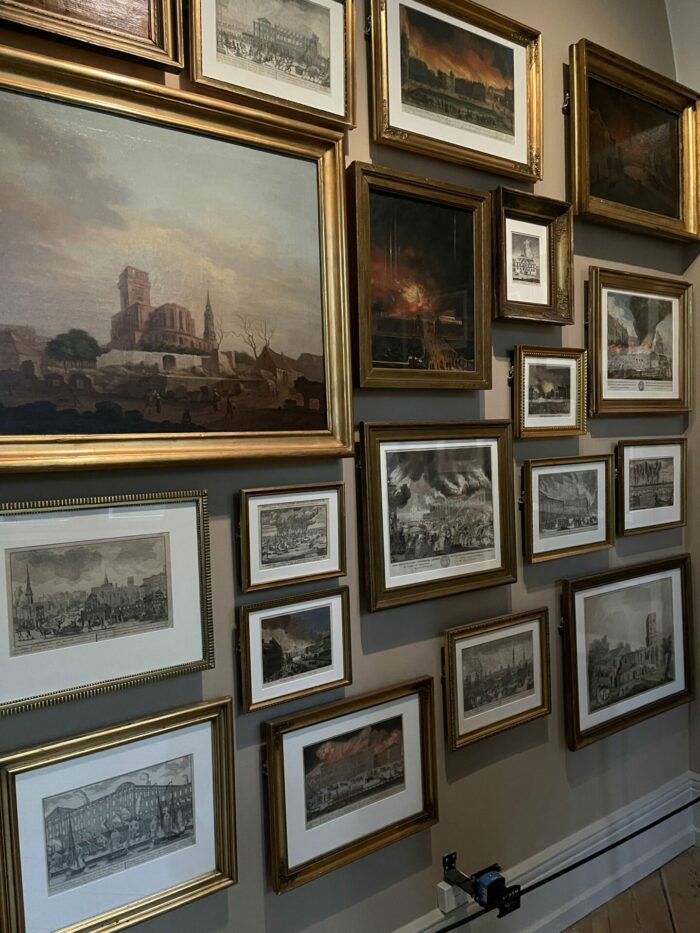
Upstairs is the next section of the museum, “The Modern City.” It covers 1850 to 1950.
This area focuses on Copenhagen’s neighborhoods, mostly on the people who lived in them as well as local industries. It’s similar to the Workers Museum in this way. Old photos and timelines fill the exhibits.
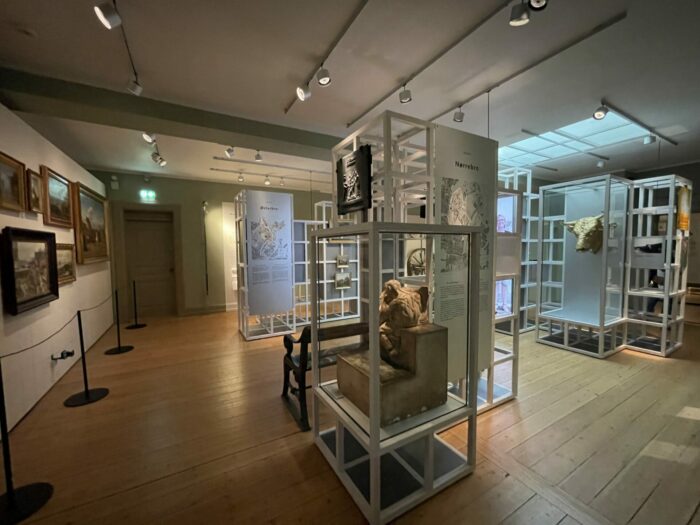
In the City Hall Square, the room is devoted to a few highlighted jobs & careers such as street photographer, engineer, kiosk attendant, tram conductor, architect, flaneur, and children. It’s nicely presented in a straightforward manner, with a few items relating to each person.

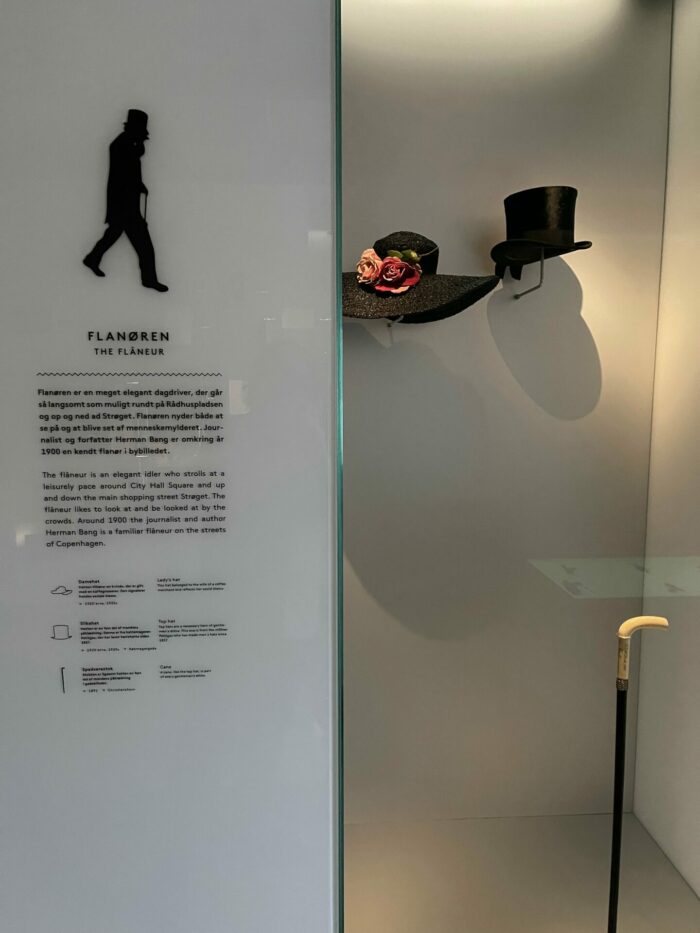
The final portion of the Copenhagen Museum covers the modern era from 1950 onward. It is titled “Debating the City.”
This era has seen Denmark become what it is today. The suburbs evolved and grew as slums were cleared and new districts were created. Models of apartments show how Danish life has changed.
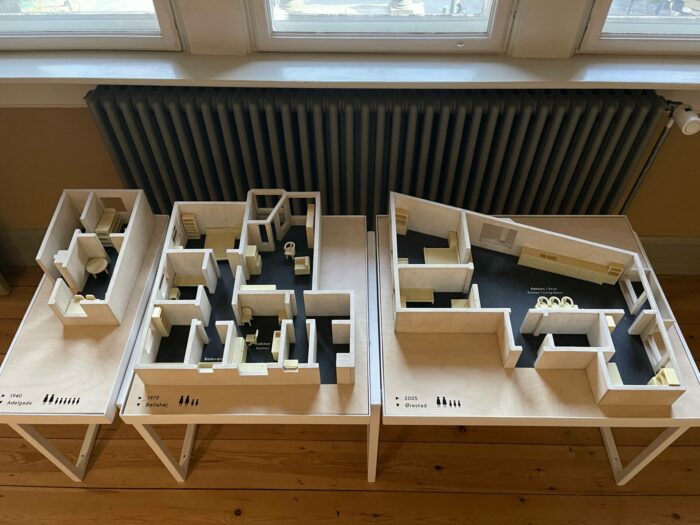
Other topics include city rights, the construction of more housing, children’s liberation, conservation, city havens, and urban planning. The famed free city of Christiania gets its own video room.
The museum concludes with the Copenhagen panorama, a 1:750 scale model of the city that lights up with local highlights. There is also a data wall with facts about Copenhagen.
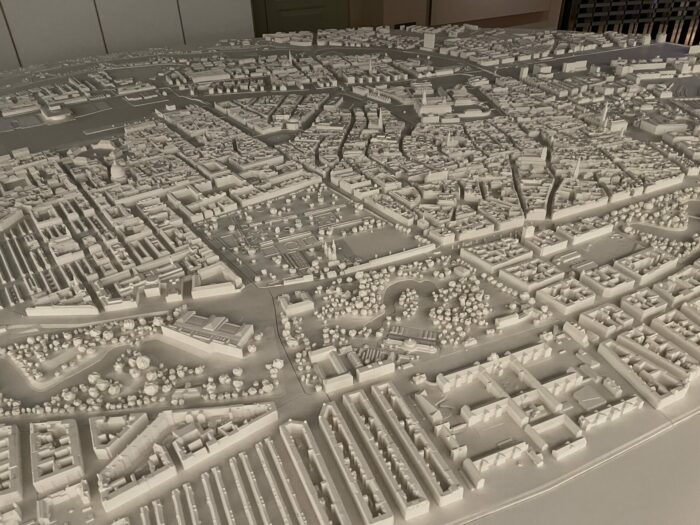
The final video room shows “Copenhagen (2019),” an 11-minute video that features stories from fictional characters representing the city.
The museum also hosted a special exhibition about Copenhagen in the 1990s. In 1996, Copenhagen was the European Capital of Culture. Some 700 time capsules were created to mark the occasion. The exhibit features a selection of these time capsules, providing a glimpse into 90s culture in Denmark & the rest of the world.
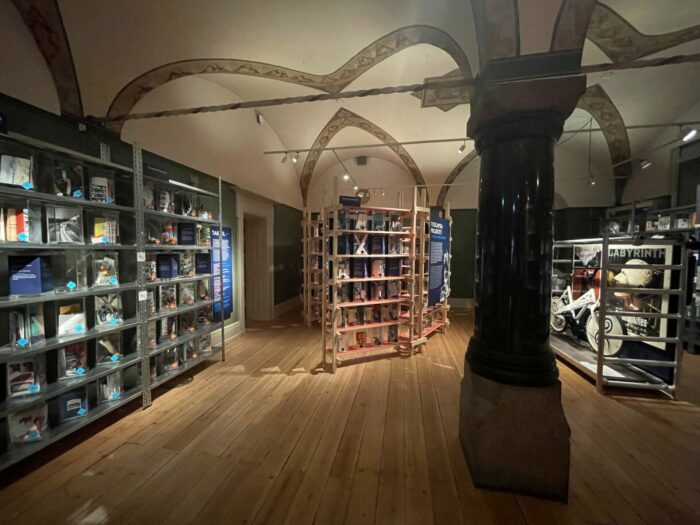
Each time capsule contained items with various themes from around the country. It’s been a long time since I’d seen so many floppy disks. One guy put in a sperm sample, which is certainly… something.
In addition to the time capsules, another room detailed the pop culture of the area. There were headphones to listen to grunge music, as well as examples of other music, comedy, film (including Danish filmmaker Lars von Trier’s director’s chair), Pride celebrations, and other entertainment.
The Museum of Copenhagen provides a good overview of the city’s history. To learn even more about the people of Denmark, visit the Workers Museum or one of the other museums in Copenhagen.
Here are some great Copenhagen tours & activities & things to do in Copenhagen.
If you’re looking for a place to stay in Copenhagen, check out these hotels. For restaurant recommendations, go here.

